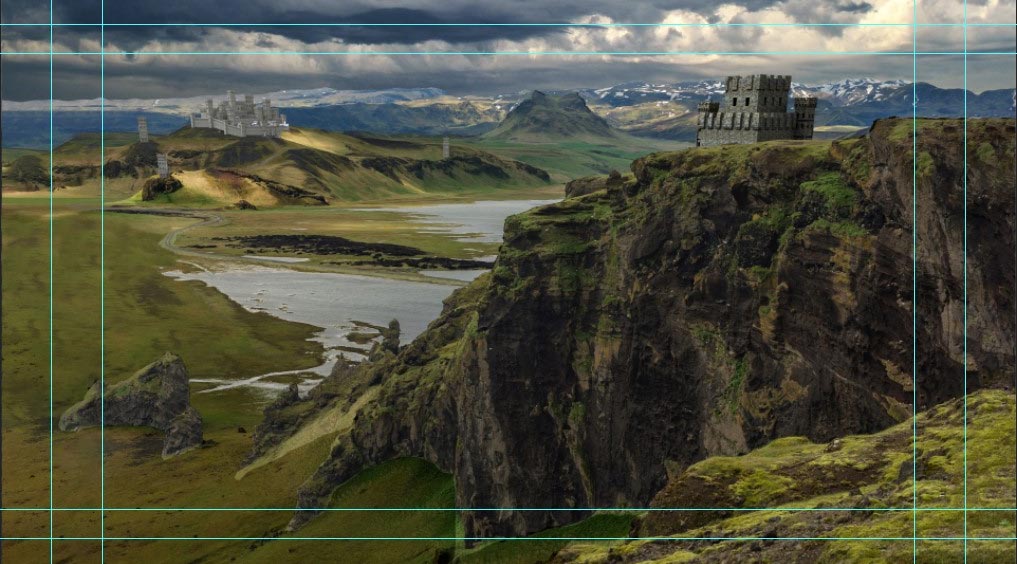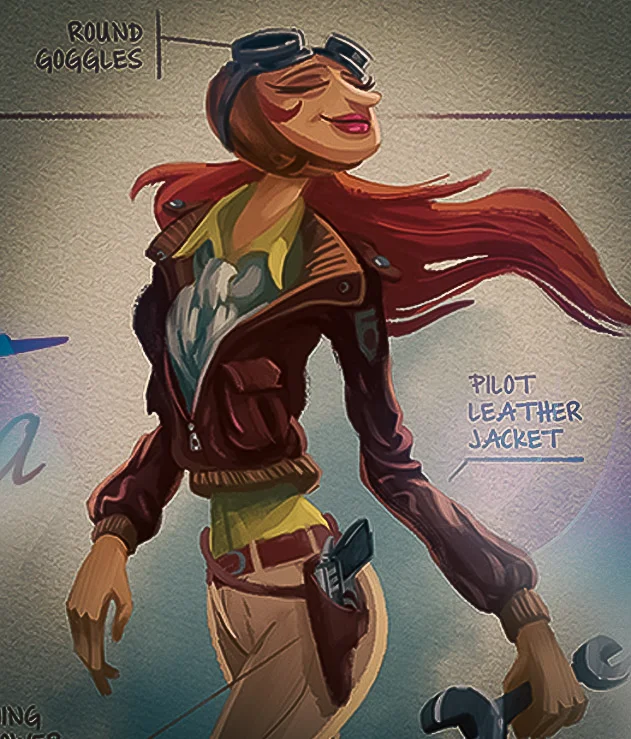 Image: Agnes E. (VANAS Student)
Image: Agnes E. (VANAS Student)
Digital Matte Painting vs. Environment Design
Exploring Two Similar Artistic Disciplines
In the realm of digital art and visual effects, two disciplines stand out for their ability to create immersive worlds that captivate audiences: digital matte painting and environment design.
Although they share common goals, the techniques, tools, and end purposes often diverge, catering to specific needs in the fields of film, video games, and animation.
This article explains the nuanced differences between digital matte painting and environment design, exploring how each contributes uniquely to storytelling and visual engagement.
What is Digital Matte Painting?
Digital matte painting is an evolution of traditional matte painting, a technique used in filmmaking to create illusionary landscapes, cityscapes, or any distant location that would be impractical or expensive to build or visit.
Historically, artists painted these scenes on large pieces of glass that were then integrated into live-action footage. Today, digital matte painting involves using digital art tools to combine 2D and 3D elements to create complex images.
Tools and Techniques
Artists employ software like Adobe Photoshop, Autodesk Maya, and Adobe After Effects. They merge photo-realistic elements from photographs with hand-painted features and 3D models to craft scenes that are seamlessly composited into live-action footage.
The result is often indistinguishable from a real environment, providing filmmakers with a cost-effective solution to achieve visually stunning backdrops.
Applications
Digital matte paintings are extensively used in movies, television shows, and even in virtual reality, primarily to enhance or create environments that do not exist at practical shooting locations. From the fantastical realms of movies like "The Lord of the Rings" to the futuristic cityscapes in "Blade Runner 2049", digital matte paintings enrich the visual narrative without the constraints of physical sets.
What is Environment Design?
Environment design, while similar in its goal to create believable spaces, differs significantly in its approach and application. It is the art of designing and creating interactive worlds where the narrative of the game or the film unfolds. The environments are not just visually detailed but are built to be explored and interacted with by characters and players.
Tools and Techniques
This discipline utilizes tools such as Blender, Autodesk Maya, or Unreal Engine to create fully navigable 3D environments. Unlike matte paintings, environment designs must consider the interactive aspect, ensuring that every element placed in the scene has a purpose and adheres to the laws of the game or film's universe.
This might include everything from the placement of objects to the textures on walls and the ambient lighting, all crafted to enhance the immersive experience.
Applications
Video games are the most common arena where environment design is crucial, but it is also important in animation and virtual reality. In games like "The Witcher 3: Wild Hunt" or "Uncharted 4", the environment plays a critical role not just visually but as a functional space that players can explore, interact with, and use to advance the narrative or gameplay.
Key Differences
While both digital matte painting and environment design aim to create believable and engaging worlds, their core differences lie in their purpose and method of creation.
- Interactivity: Matte paintings are static backgrounds intended to serve as a backdrop that supports the visual narrative. In contrast, environment design focuses on creating spaces that are interactive and explorable.
- Dimensionality: Digital matte paintings often merge 2D and 3D elements to create the illusion of depth, but they are inherently non-navigable. Environment designs are fully 3D and built to be viewed and interacted with from multiple angles.
- Purpose in Production: In films, digital matte paintings are used to extend physical sets and create environments that are hard or impossible to film. For games and VR, environment design must consider player interaction, physics, and gameplay mechanics, making it a more dynamic discipline.
Wrapping up
The distinction between digital matte painting and environment design highlights the specialized skills and unique approaches required in the world of digital arts.
Matte painters and environment designers play critical roles in the production of films, games, and virtual simulations, each mastering a blend of art and technology to bring fantastical and engaging worlds to life.
By understanding the differences between these two fields, we gain a deeper appreciation for the artists and designers who shape our visual and interactive experiences. As technology advances, the boundaries of what can be achieved in both digital matte painting and environment design will continue to expand, promising even more breathtaking and immersive worlds in the future.
Whether you're a filmmaker, a game developer, or just a lover of beautiful, complex scenes, recognizing the roles of digital matte painting and environment design can enrich your understanding of the visual world and its creation.
As we continue to explore and push the limits of what digital art can achieve, the evolution of these disciplines will undoubtedly play a pivotal role in shaping the future of entertainment and virtual experiences.
You can learn digital matte painting and environment design at VANAS Online Animation School, which offers specialized courses tailored to these fields. The programs are designed to equip students with the necessary skills and knowledge to excel in the visual effects and gaming industries.







